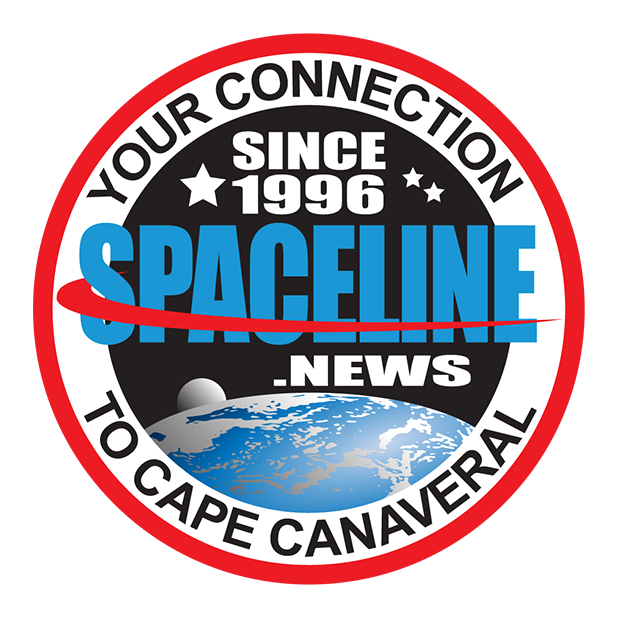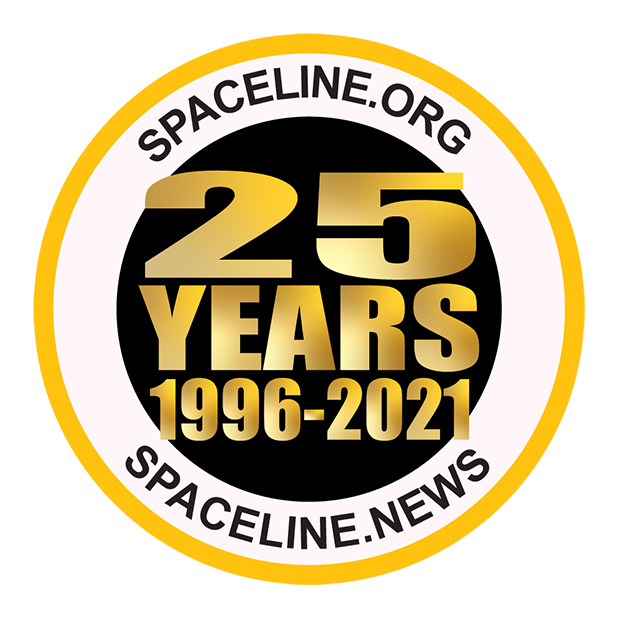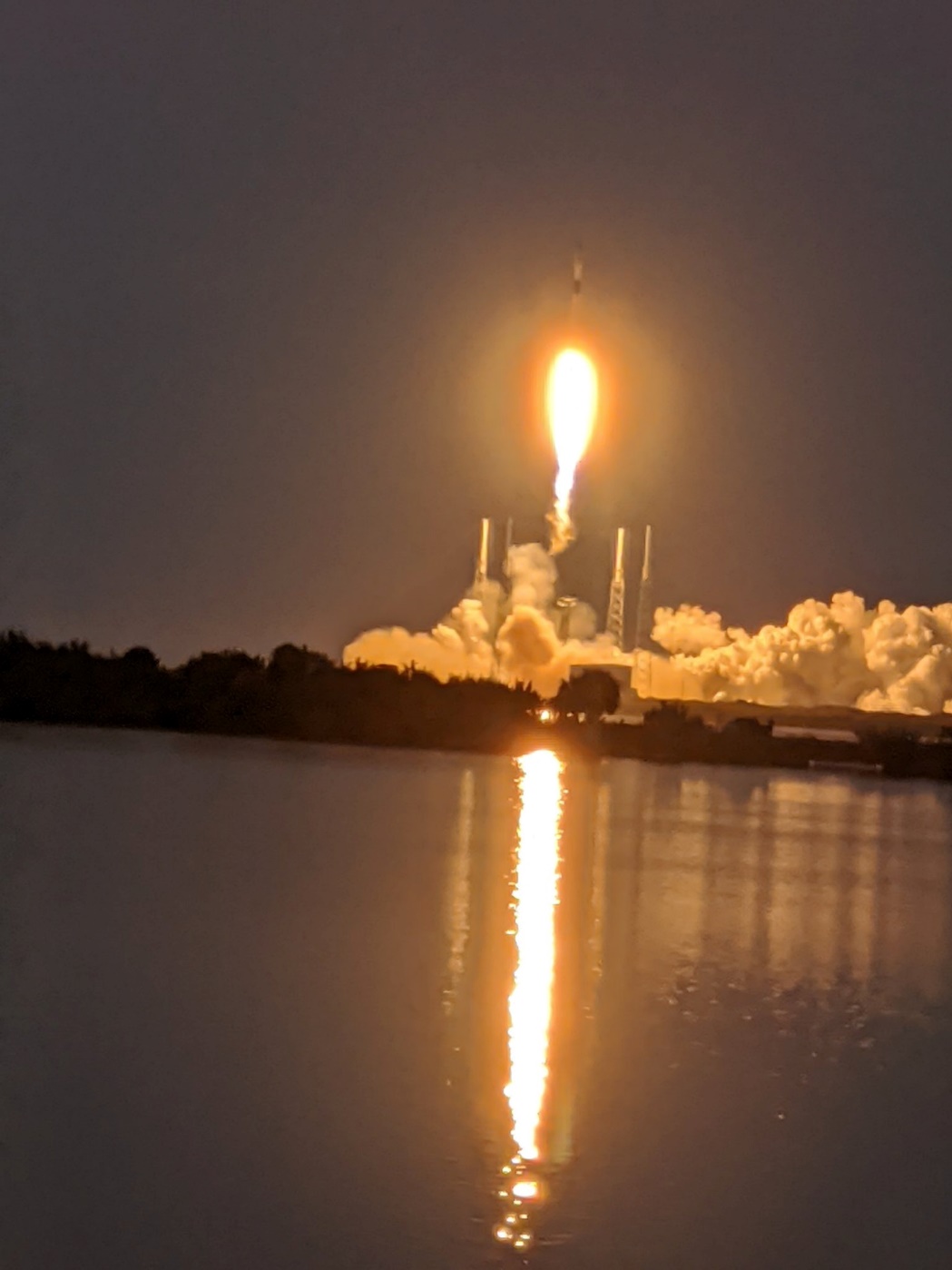
Falcon 9 CSG-2 Launch, Photo Courtesy Cliff Lethbridge/Spaceline
Falcon 9 Launches CSG-2 Payload On Fifth Attempt
January 31, 2022 | Reported by Cliff Lethbridge
A SpaceX Falcon 9 rocket successfully launched the COSMO-SkyMed Second Generation-2 (CSG-2) satellite at 6:11 p.m. EST today from Launch Pad 40 on Cape Canaveral Space Force Station (CCSFS). This was the fifth CSG-2 launch attempt. Launch attempts on January 27, 2022, January 28, 2022 and January 29, 2022 were scrubbed due to unacceptable weather at the launch site. A launch attempt on January 30, 2022 was scrubbed due to a cruise ship straying into the launch hazard area offshore Cape Canaveral.
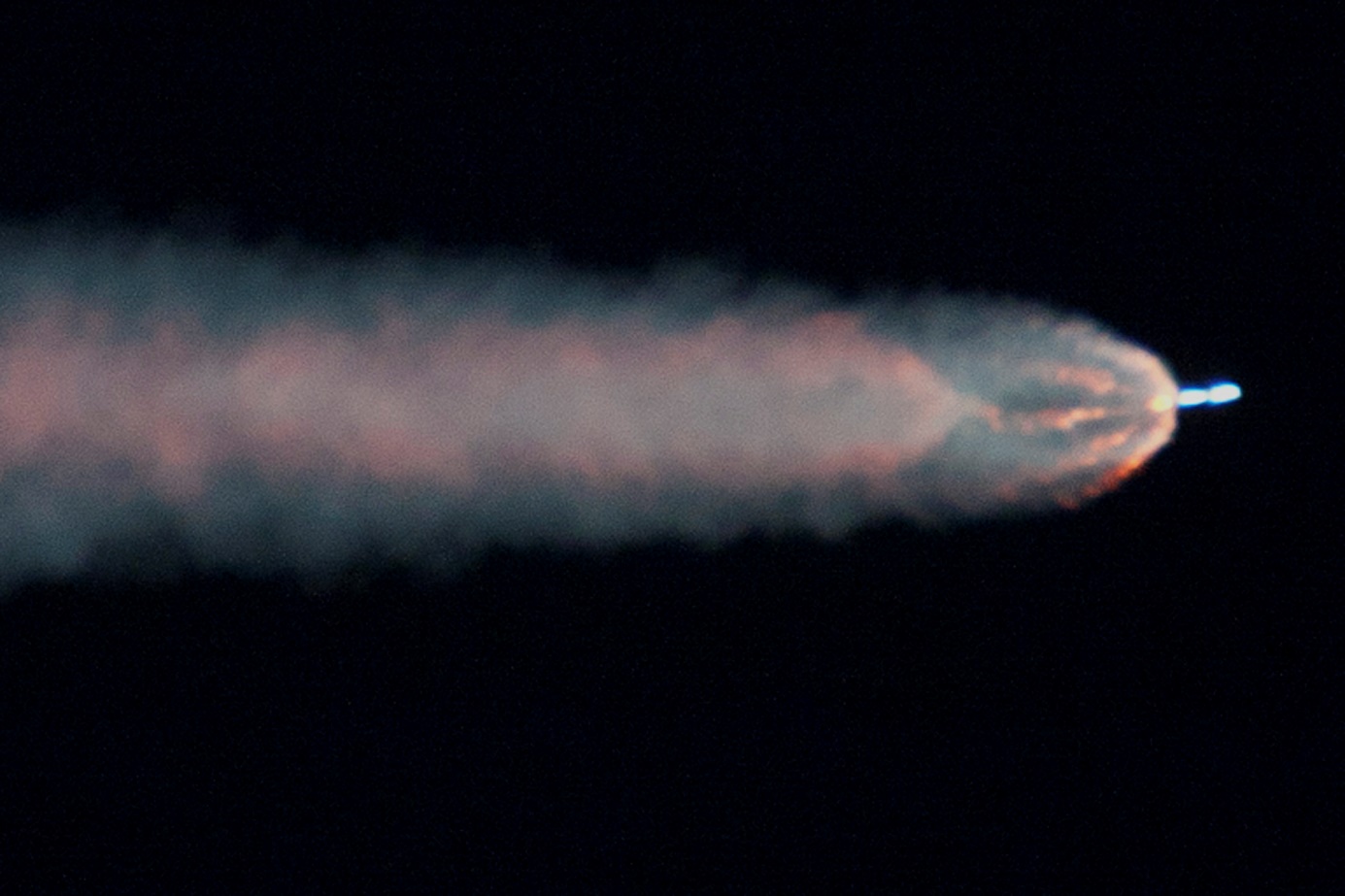
Falcon 9 CSG-2 Downrange, Photo Courtesy Carleton Bailie/Spaceline
The first stage booster employed today was being flown for the third time, having previously served as a side booster on the Falcon Heavy Arabsat-6A and STP-2 missions. The booster was successfully recovered today with a landing at Landing Zone 1 on CCSFS. The payload fairing halves flown today were each being flown for the fourth time. One half previously supported the Transporter-1, Transporter-2 and one Starlink mission. The other half previously supported the SAOCOM-1B, Transporter-2 and one Starlink mission. The payload fairing halves were recovered today after parachuting to the Atlantic Ocean.
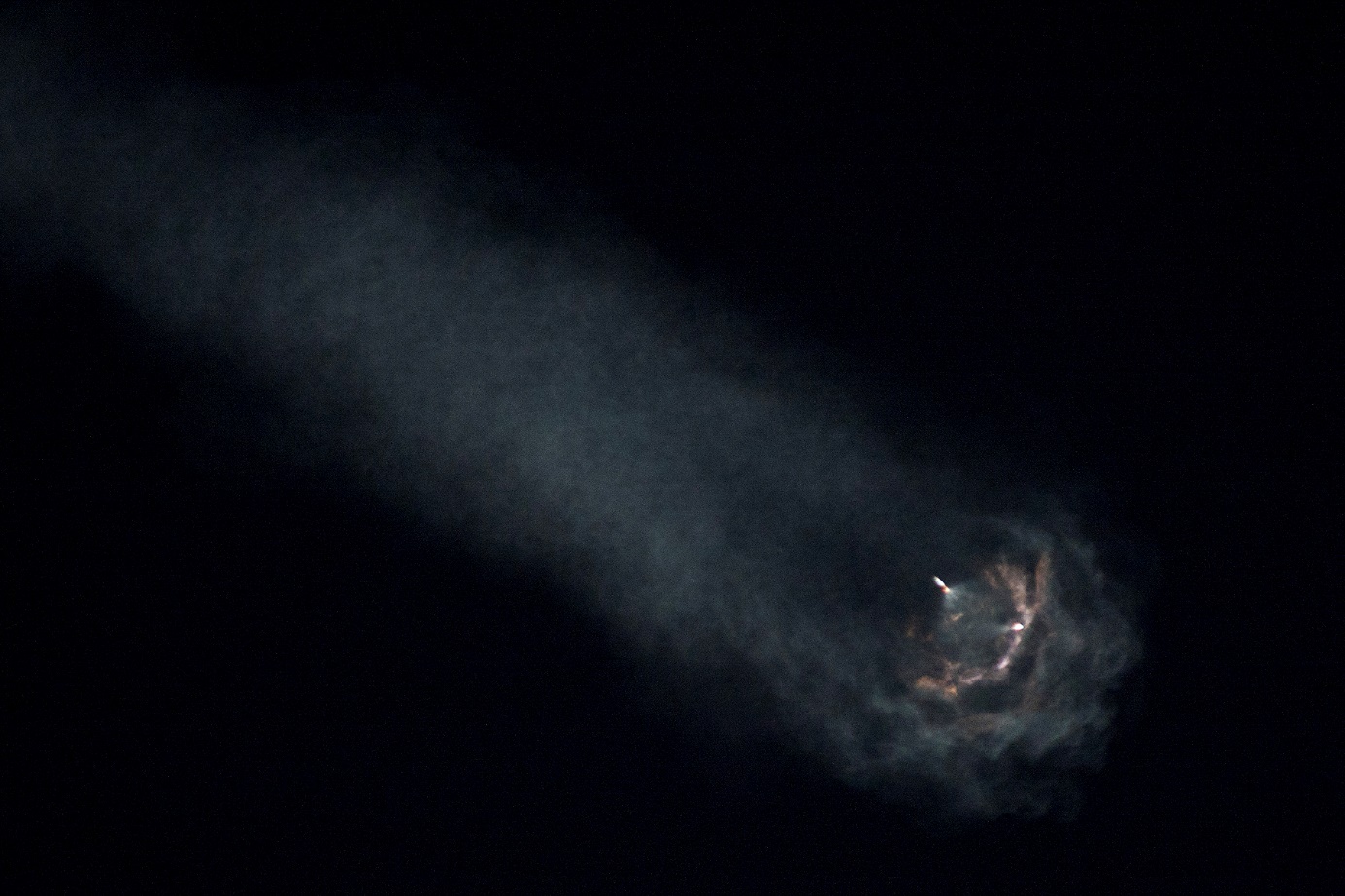
Falcon 9 CSG-2 Stage Separation, Photo Courtesy Carleton Bailie/Spaceline
CSG-2, manufactured by Thales Alenia Space, is the second satellite in the second generation of satellites in the COSMO-SkyMed constellation. Four satellites were launched in the first generation of the constellation, and two more will be launched in the second generation. The COSMO-SkyMed satellites are designed to provide radar remote sensing of Earth from a variety of vantage points in low-Earth orbit. Data obtained for multiple users is intended to produce a number of images which may enhance the ability of users to maximize crop yields, measure climatic conditions and predict and mitigate natural disasters like volcanic eruptions. The second generation's remaining two satellites are scheduled to be launched in 2024, but from South America, not Cape Canaveral.
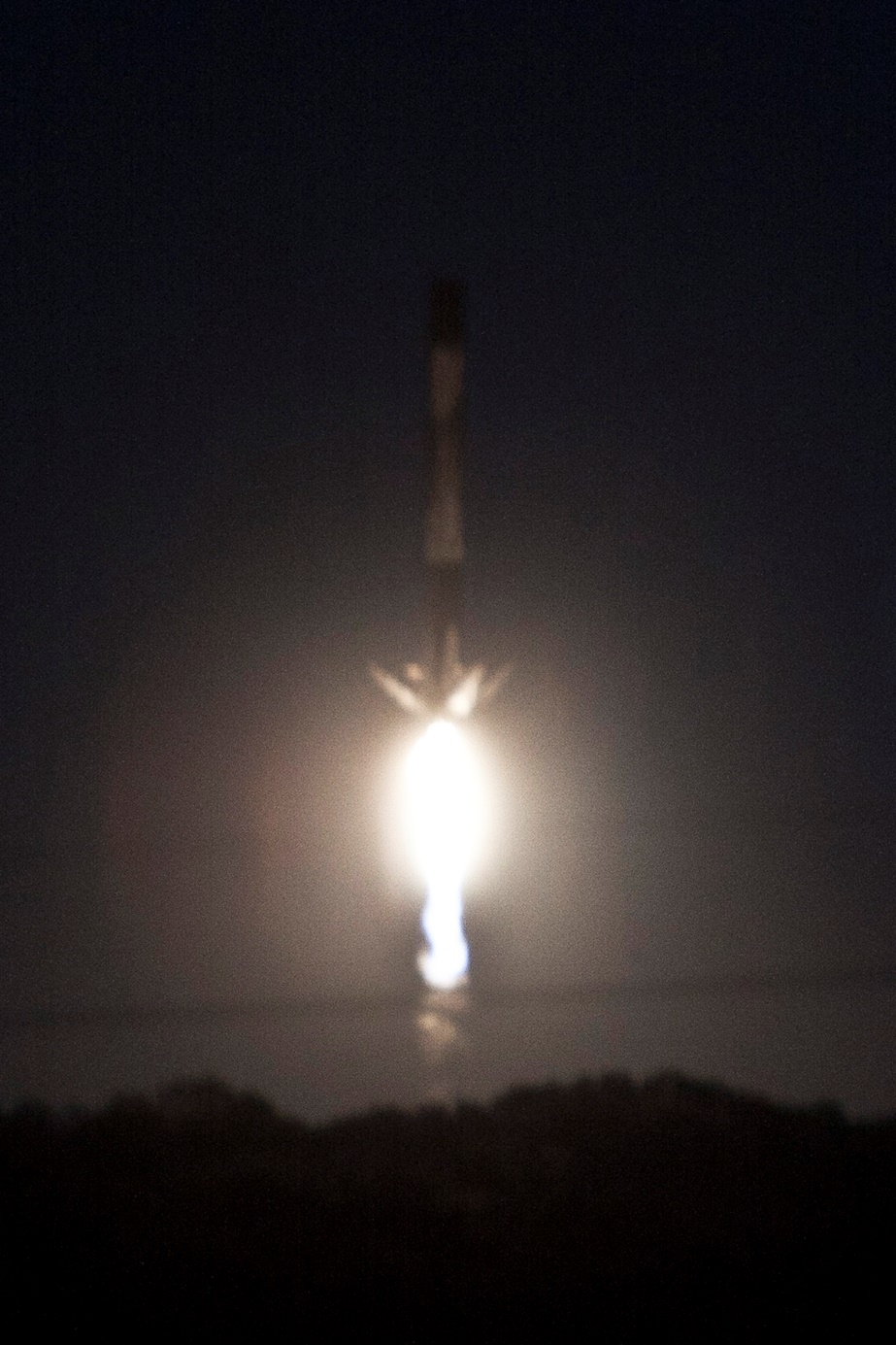
Falcon 9 CSG-2 Booster Landing, Photo Courtesy Carleton Bailie/Spaceline
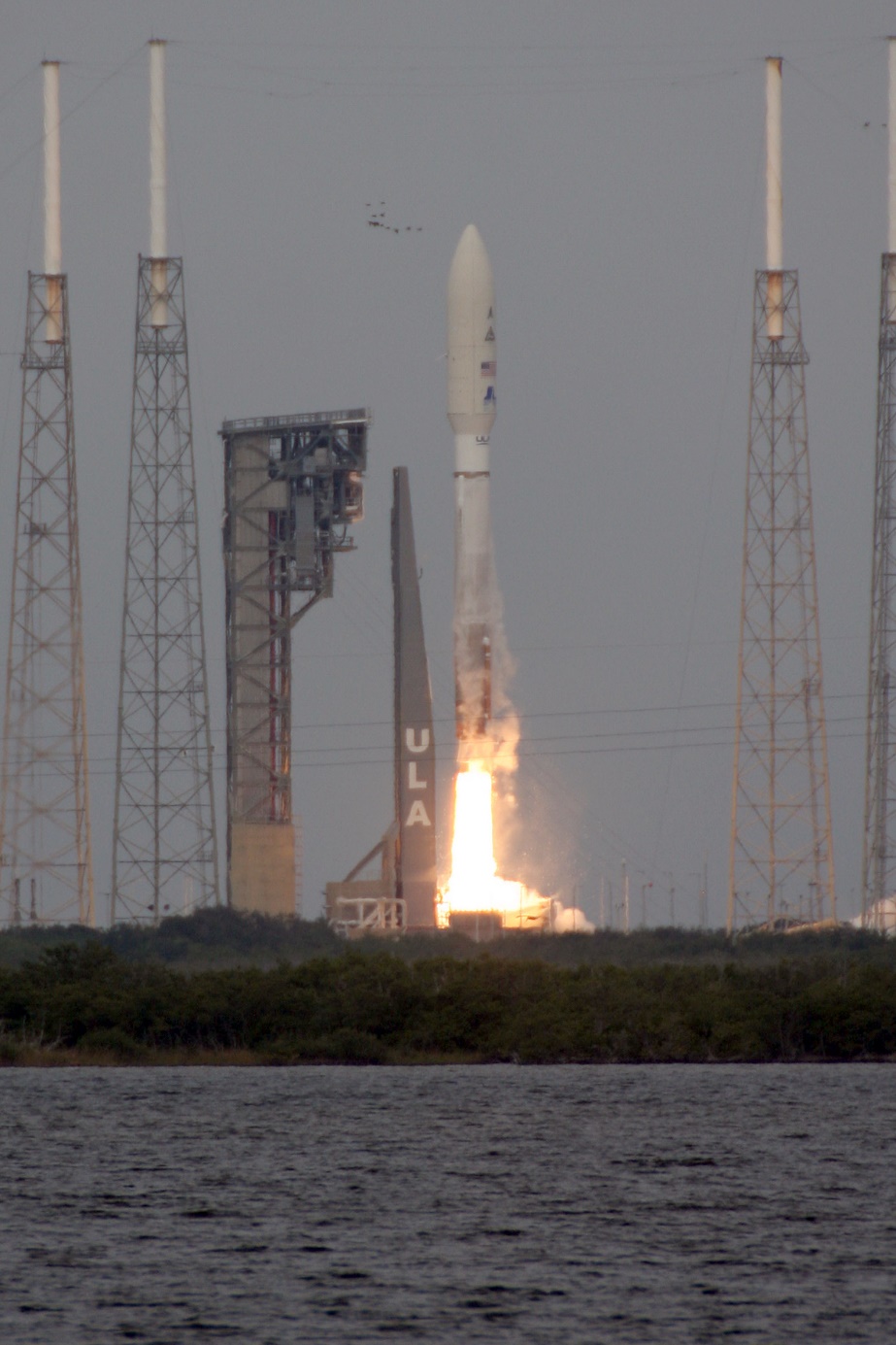
Atlas V USSF-8 Launch, Photo Courtesy Carleton Bailie/Spaceline
Atlas V Launches Space Force Payload
January 21, 2022 | Reported by Cliff Lethbridge
A United Launch Alliance Atlas V rocket successfully launched the USSF-8 (U.S. Space Force-8) payload at 2:00 p.m. EST today from Launch Pad 41 on Cape Canaveral Space Force Station. The rocket was launched in the rare, never before flown 511 configuration, featuring a 5-meter payload fairing, one solid rocket booster and a single-engine Centaur second stage. The rocket flew a direct ascent profile, delivering the USSF-8 payload to geosynchronous orbit about 22,300 miles above the equator in a flight lasting about seven hours. This was the 91st launch of an Atlas V rocket and the 147th launch overall for United Launch Alliance with 100% mission success. USSF-8 carried two Geosynchronous Space Situational Awareness Program (GSSAP) satellites, designated GSSAP-5 and GSSAP-6. The satellites are intended to monitor the geosynchronous environment, providing timely and accurate orbital predictions and further enabling space flight safety including satellite collision avoidance.
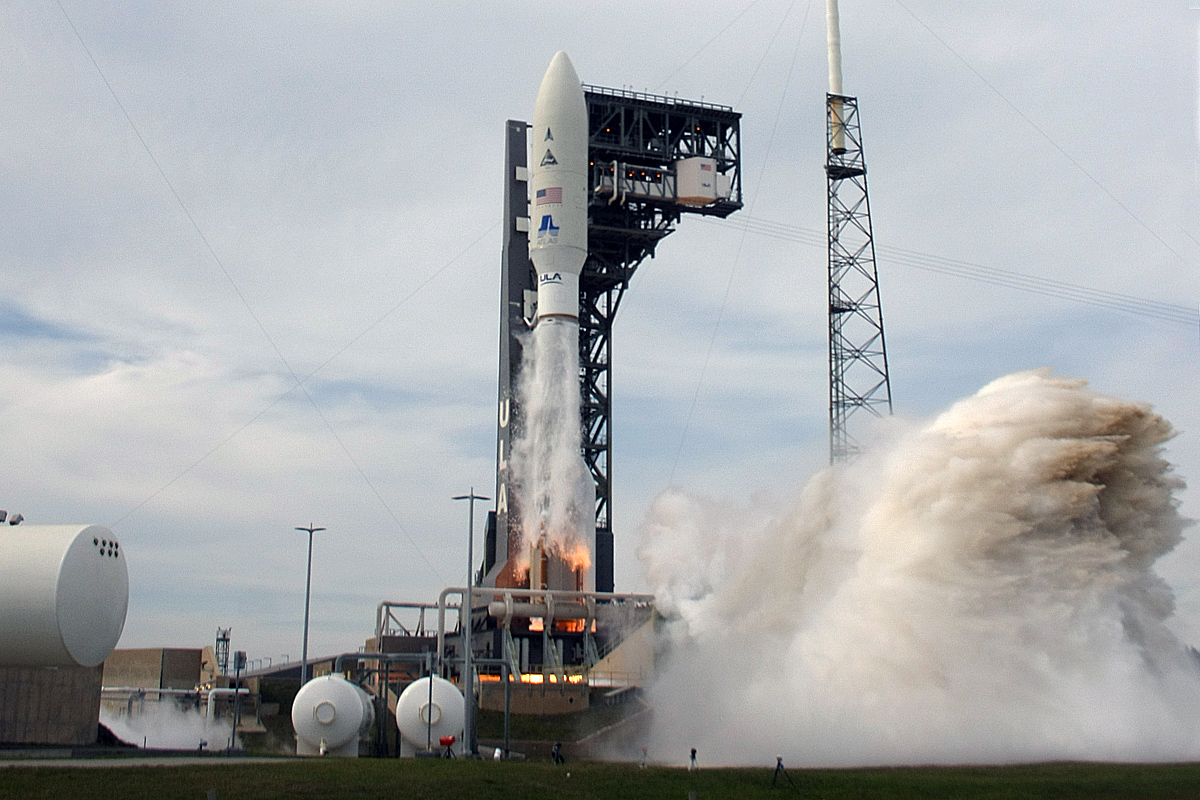
Atlas V USSF-8 Launch, Photo Courtesy Carleton Bailie/Spaceline
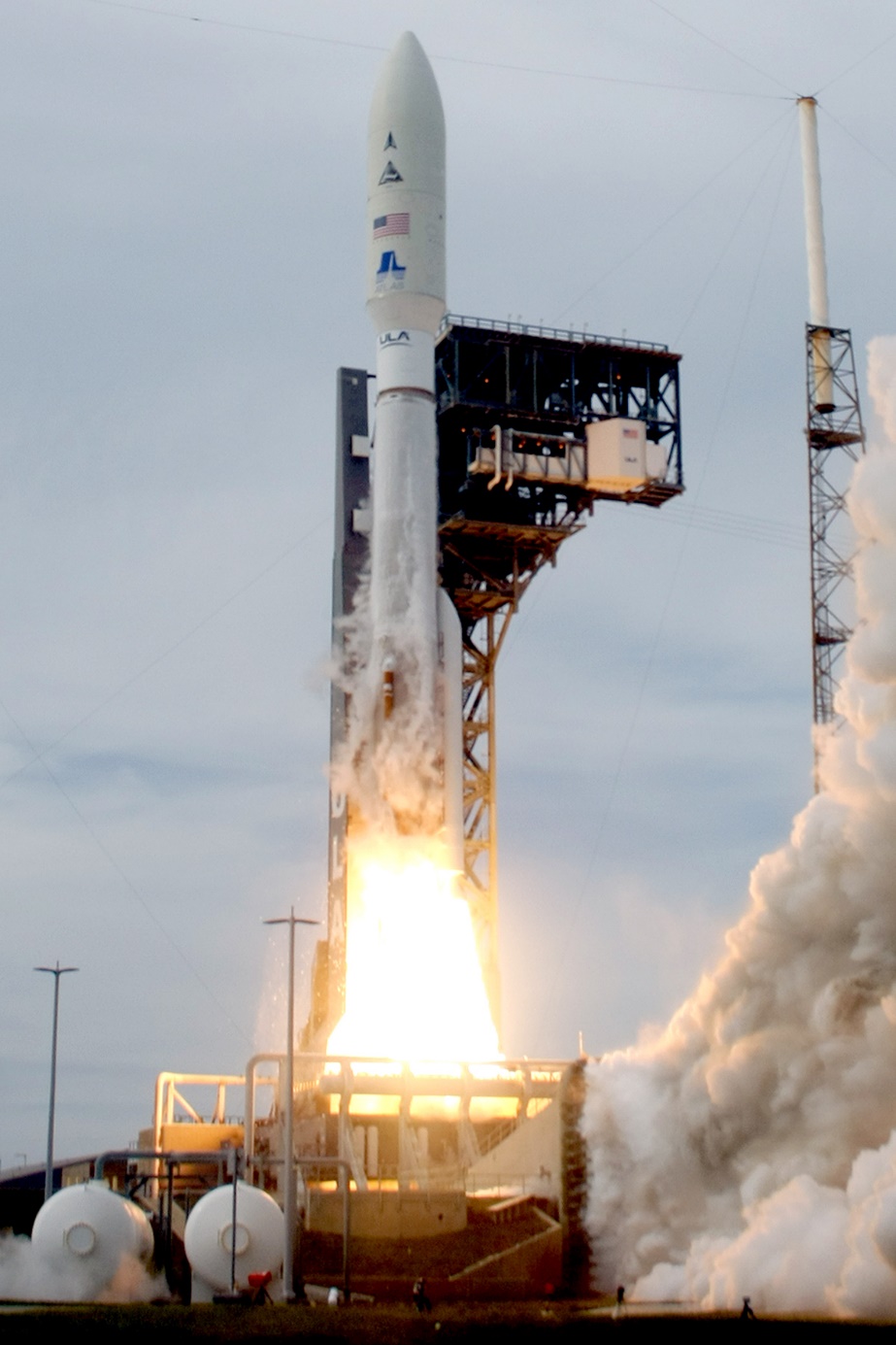
Atlas V USSF-8 Launch, Photo Courtesy Carleton Bailie/Spaceline
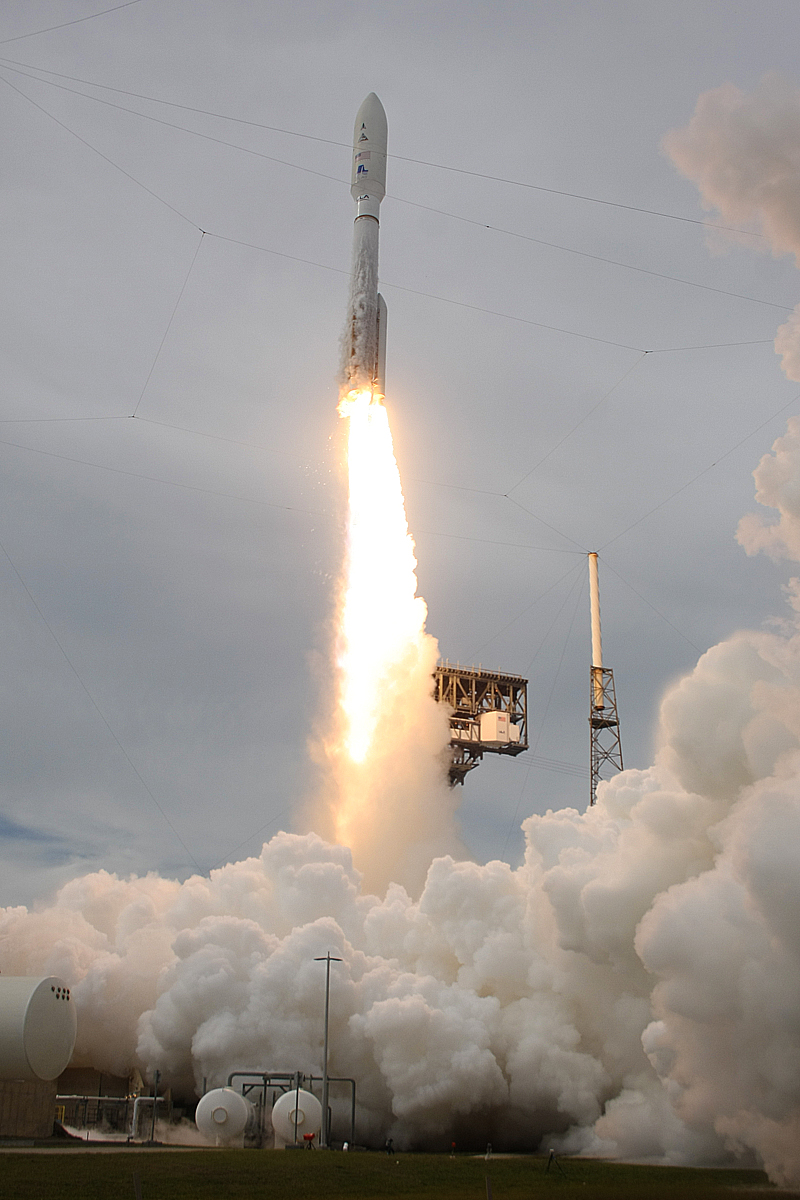
Atlas V USSF-8 Launch, Photo Courtesy Carleton Bailie/Spaceline
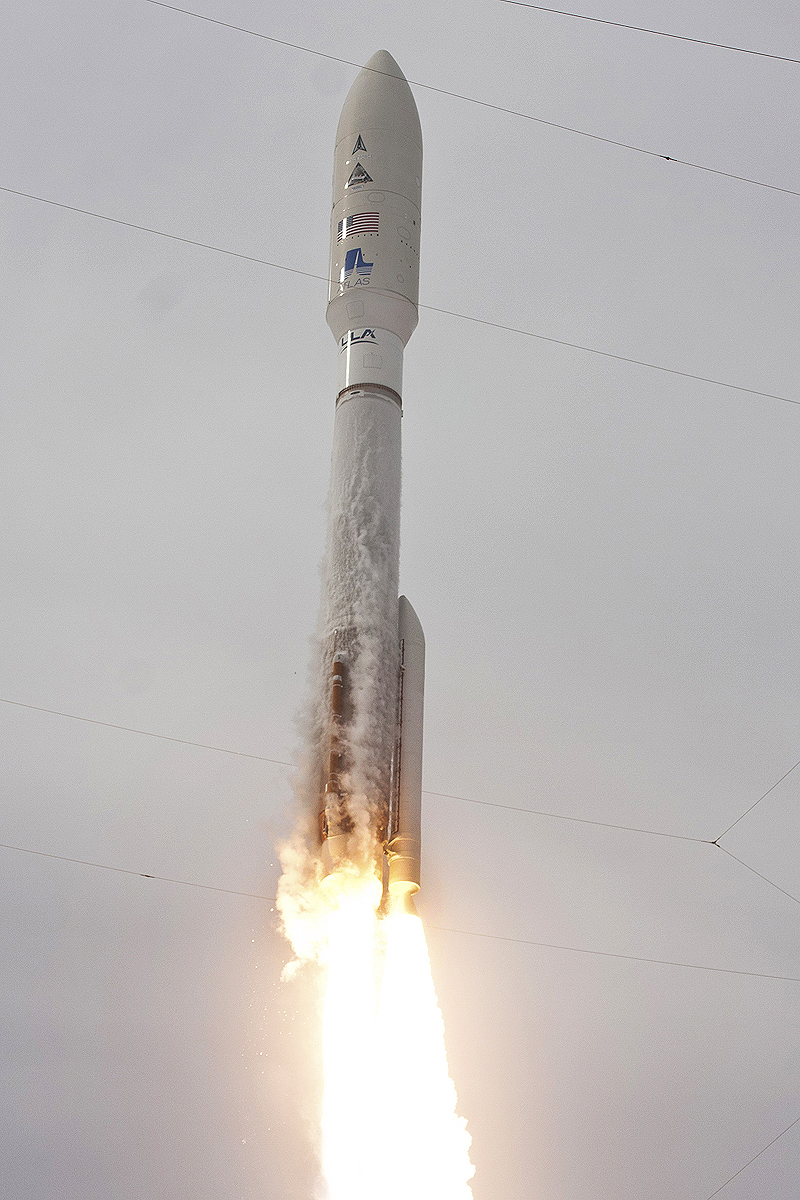
Atlas V USSF-8 In Flight, Photo Courtesy Carleton Bailie/Spaceline
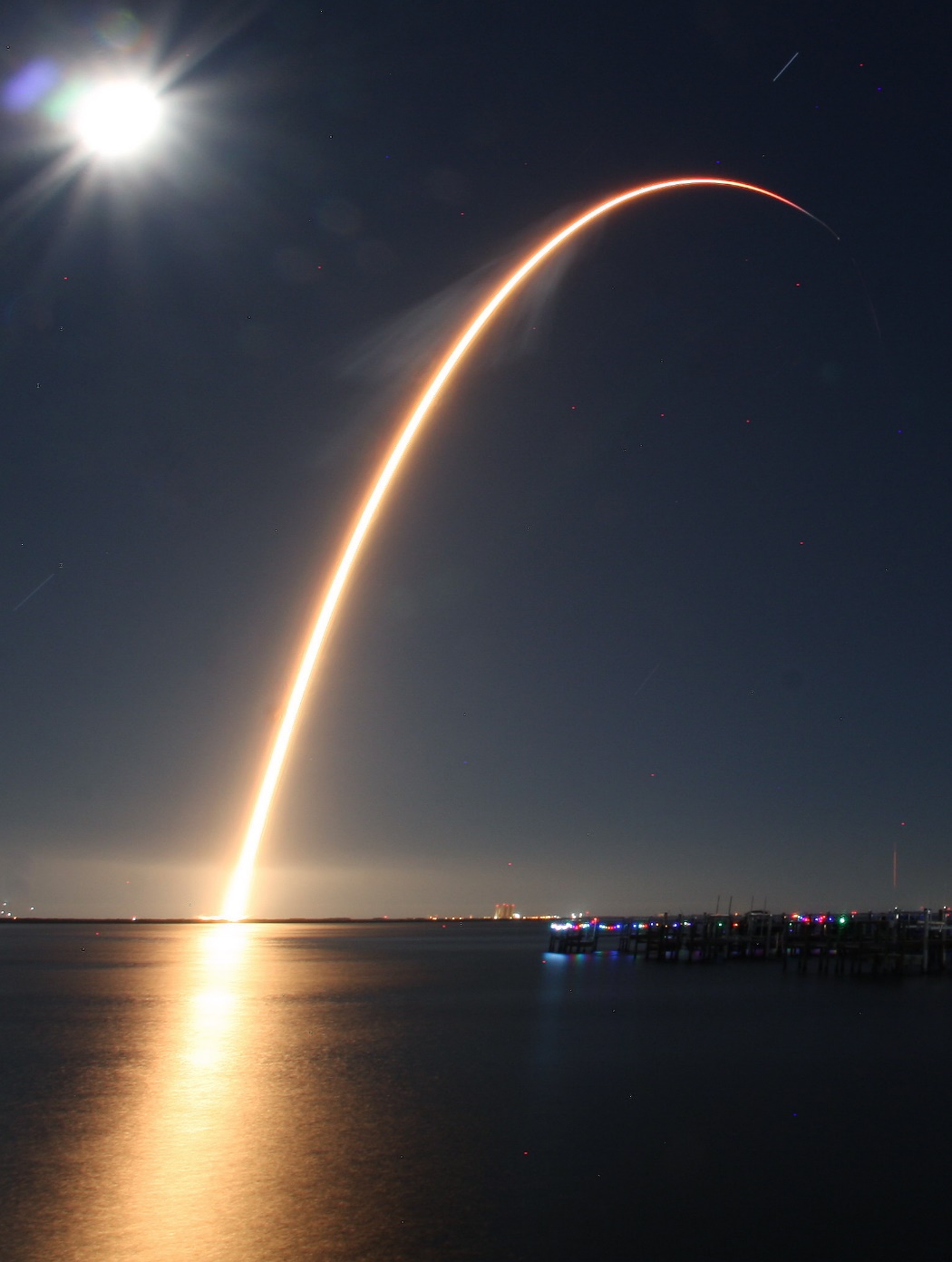
Falcon 9 Starlink 4-6 Streak Shot, Photo Courtesy Carleton Bailie/Spaceline
Falcon 9 Surpasses 2,000 Starlink Satellite Launches
January 18, 2022 | Reported by Cliff Lethbridge
A SpaceX Falcon 9 rocket successfully launched 49 Starlink broadband Internet satellites at 9:02 p.m. EST today from Launch Pad 39A at the Kennedy Space Center. This launch surpassed the 2,000 Starlink satellite mark, bringing the total launched to 2,042 but not all of these are operational or still in orbit. The first stage booster employed today was being flown for the tenth time, having previously supported the GPS III-SV03, Turksat-5A, Transporter-2 and six Starlink missions. The booster was successfully recovered today with a landing on the "A Shortfall of Gravitas" drone ship positioned on the Atlantic Ocean north of the Bahamas. This mission, designated Starlink 4-6, was the 35th designated Starlink flight. The launch was originally scheduled for January 17, 2022 but was postponed about 24 hours to allow weather conditions to improve in the booster recovery area. Starlink is a SpaceX-owned and operated constellation of broadband Internet satellites which currently serves about 145,000 users in 25 countries and regions throughout the world.
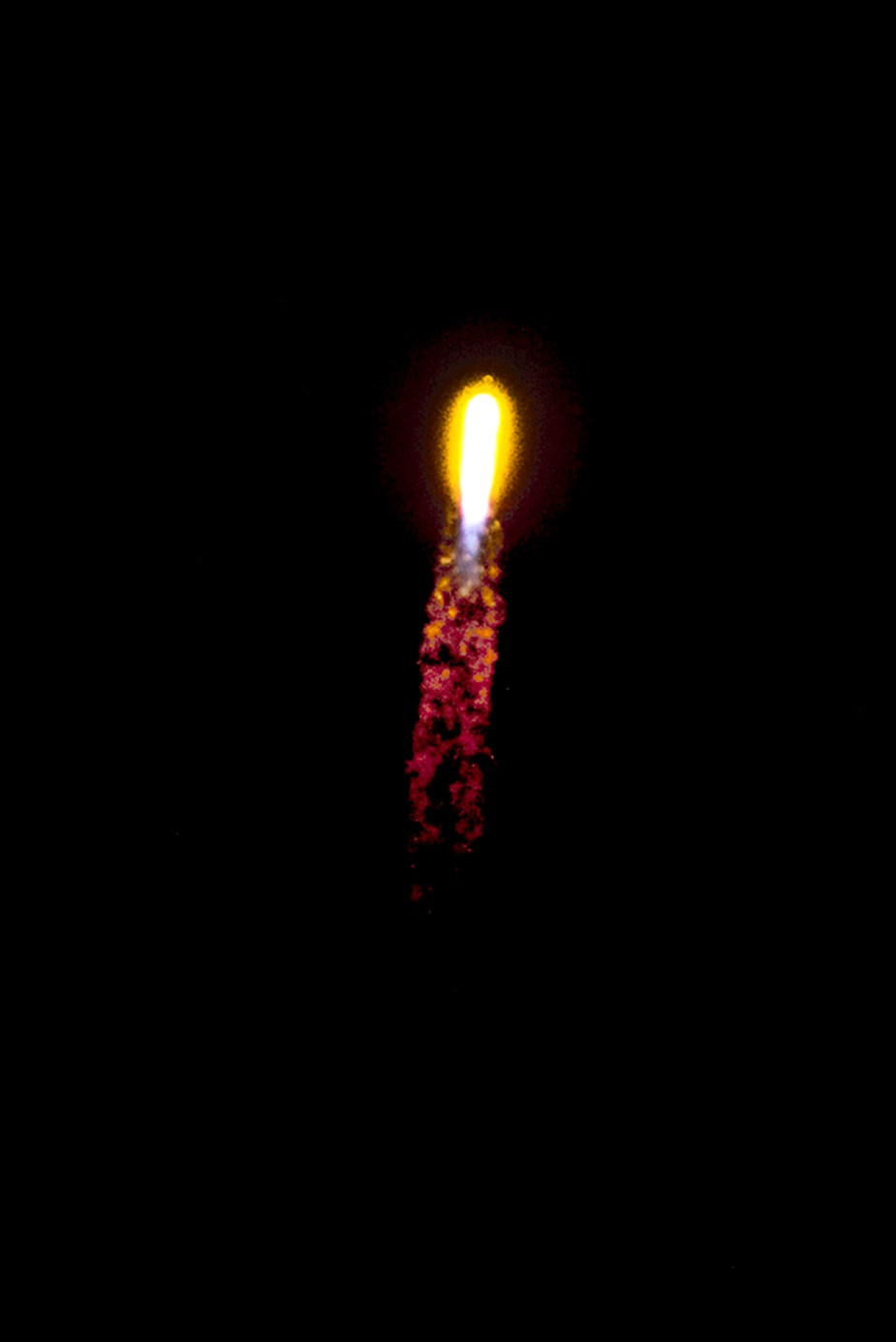
Falcon 9 Starlink 4-6 Ascent, Photo Courtesy Carleton Bailie/Spaceline
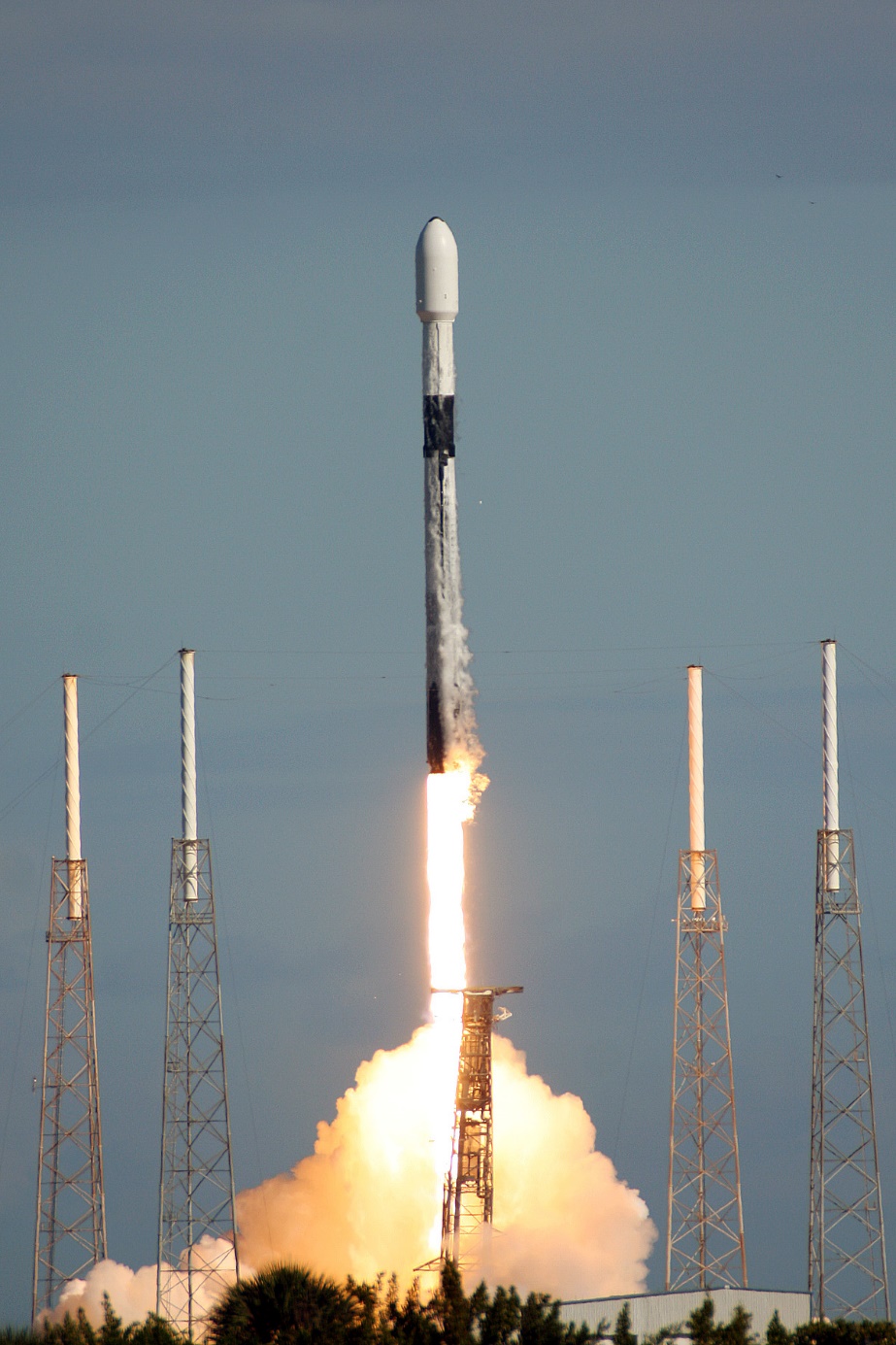
Falcon 9 Transporter-3 Launch, Photo Courtesy Carleton Bailie/Spaceline
Falcon 9 Launches Transporter-3 Rideshare Mission
January 13, 2022 | Reported by Cliff Lethbridge
A SpaceX Falcon 9 rocket successfully launched the Transporter-3 Rideshare mission at 10:25 a.m. EST today from Launch Pad 40 on Cape Canaveral Space Force Station (CCSFS). The first stage booster employed today was being flown for the tenth time, having previously supported the DM-2, ANASIS-II, CRS-21 and Transporter-1 missions plus five Starlink missions. The booster was successfully recovered today with a landing at Landing Zone-1 on CCSFS. Transporter-3 is the third dedicated Rideshare mission for SpaceX. The rocket carried a total of 105 satellites, including cubesats, microsats, PocketQubes and orbital transfer vehicles. The first satellite was deployed about one hour after launch, while the last was deployed about 90 minutes after launch.
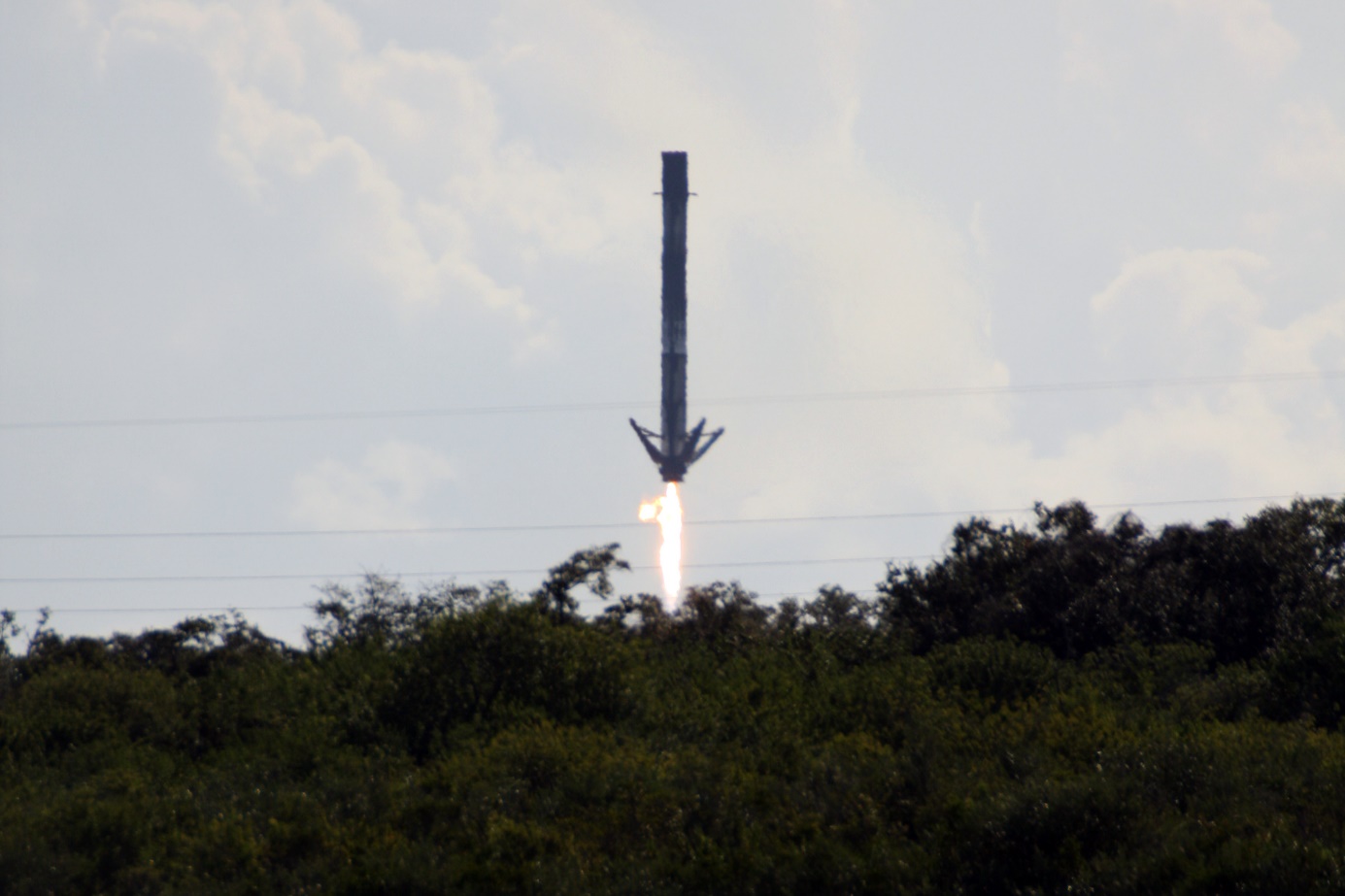
Falcon 9 First Stage Approaches Landing, Photo Courtesy Carleton Bailie/Spaceline
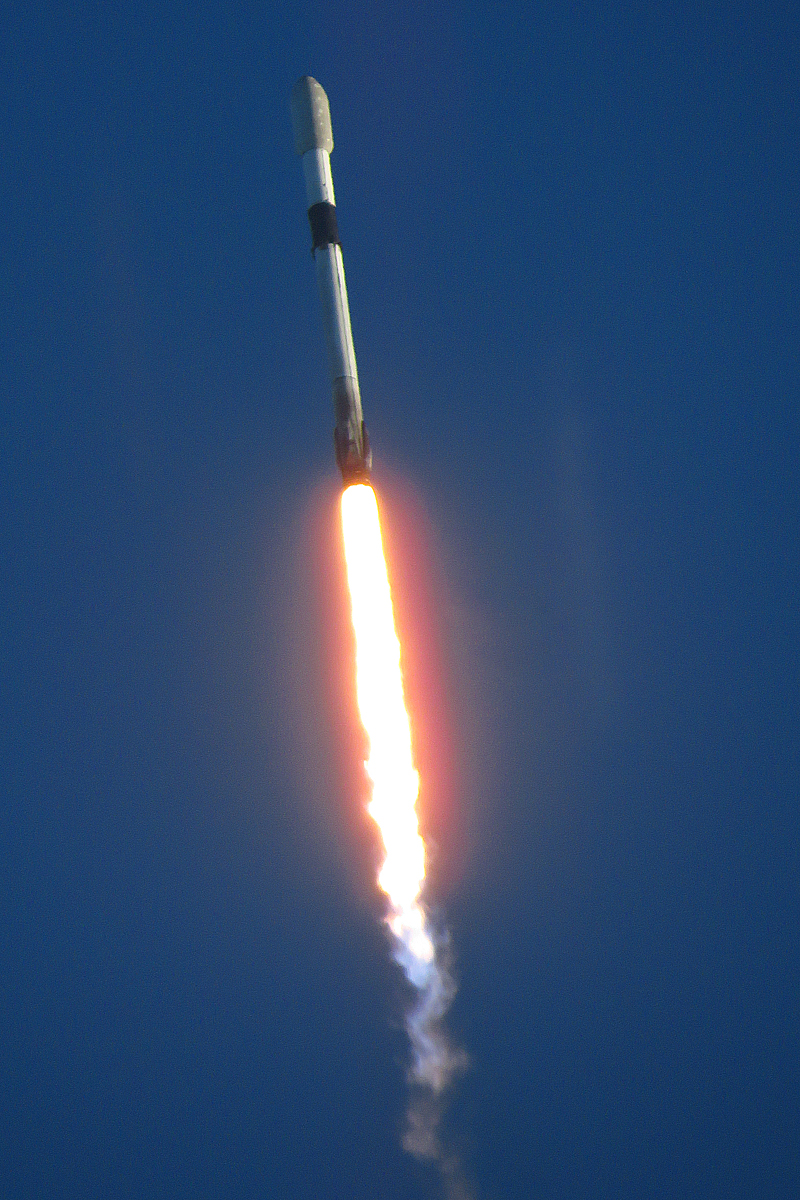
Falcon 9 Starlink 4-5 In Flight, Photo Courtesy Carleton Bailie/Spaceline
Falcon 9 Launches More Starlink Satellites
January 6, 2022 | Reported by Cliff Lethbridge
A SpaceX Falcon 9 rocket successfully launched 49 Starlink broadband Internet satellites at 4:49 p.m. EST today from Launch Pad 39A at the Kennedy Space Center. The first stage booster employed today was being flown for the fourth time, having previously supported the GPS III-SV04, GPS III-SV05 and Inspiration4 missions. The booster was successfully recovered today with a landing on the "A Shortfall of Gravitas" drone ship positioned on the Atlantic Ocean north of the Bahamas. The mission, designated Starlink 4-5, was the 34th dedicated Starlink launch, bringing the total number of Starlink satellites launched to date to 1,993 although not all of these are operational or still in orbit. Starlink is a SpaceX-owned and operated space-based Internet service which currently provides coverage to about 145,000 subscribers worldwide.
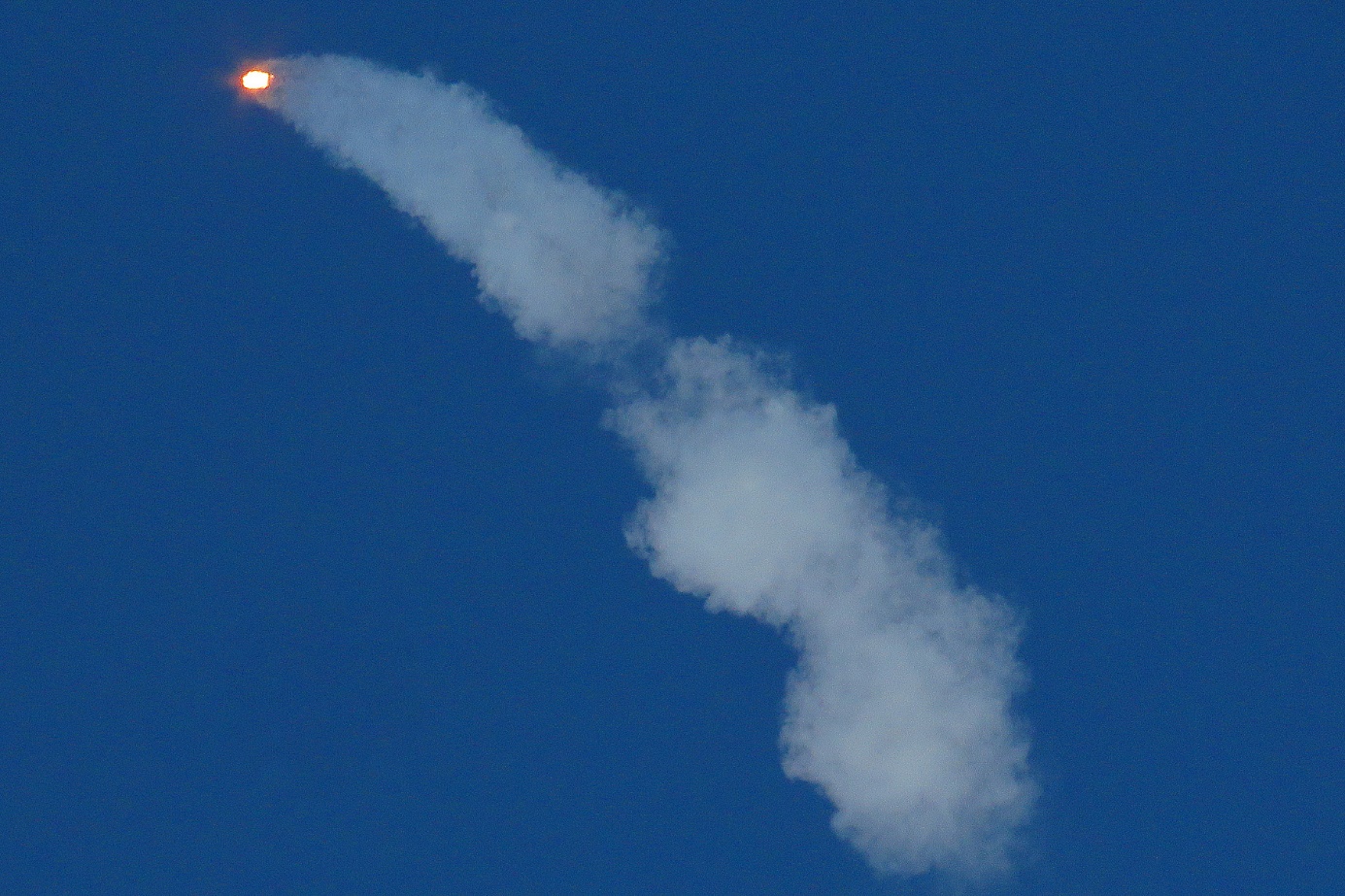
Falcon 9 Starlink 4-5 Downrange, Photo Courtesy Carleton Bailie/Spaceline




